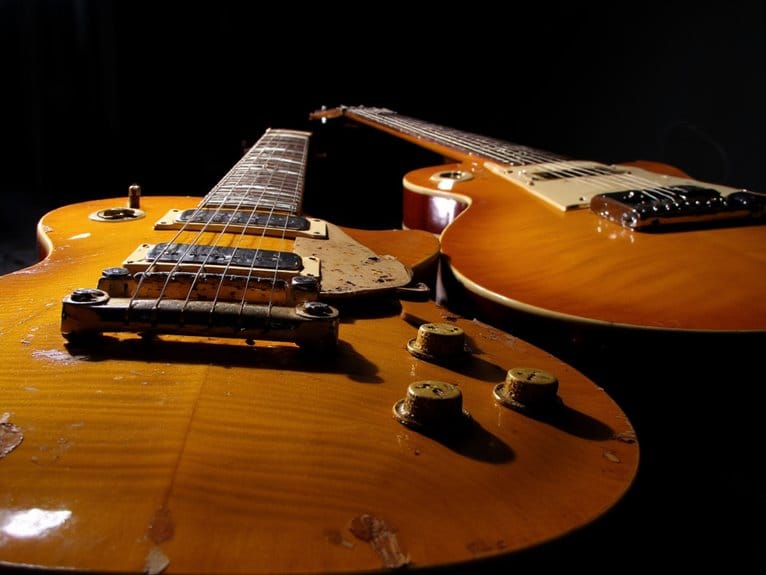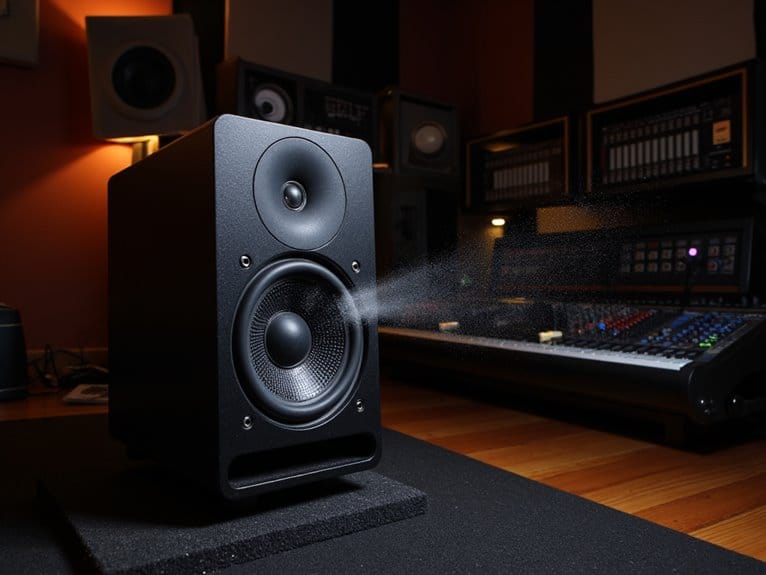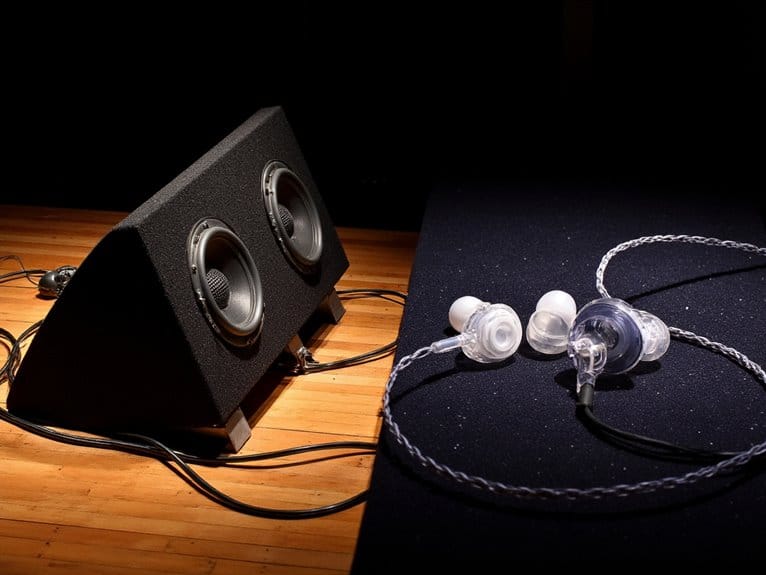Vintage Guitars: Myths Vs Reality
You’ve probably heard that vintage guitars are automatically worth more than modern ones, but this widespread belief crumbles when you examine the actual factors that drive value in today’s $1.59 billion vintage guitar market. Age and brand don’t guarantee worth-condition, originality, and rarity determine pricing, while replaced components can tank values considerably. Modern guitars often deliver superior tuning stability and harmonic complexity compared to vintage models’ boomy, woody characteristics, though investment potential exists for informed collectors who understand market fluctuations and authenticity requirements.
We are supported by our audience. When you purchase through links on our site, we may earn an affiliate commission, at no extra cost for you. Learn more.
Notable Insights
- Age and brand alone don’t determine vintage guitar value-condition, originality, and market factors are equally critical.
- Replaced parts significantly decrease guitar worth, while original components like tuners and bridges maintain appraisal accuracy.
- Vintage guitars offer woody, bass-driven tones while modern guitars provide brighter sound with enhanced harmonic complexity.
- The vintage guitar market represents legitimate investment opportunities but carries risks from fluctuations and potential bubbles.
- Limited production runs create genuine scarcity and collector demand, not just marketing hype about rarity.
The True Value Behind Vintage Guitar Pricing
While most people assume a vintage guitar’s worth comes down to its age and brand name, I’ve learned through years of collecting that the reality is far more nuanced, involving a complex interplay of condition, originality, and market factors that can make or break a guitar’s value.
You’ll find that appraisal accuracy depends heavily on examining original components like tuners, bridges, and electronics, since replaced parts can slash prices dramatically.
Rarity factors play equally significant roles-limited production runs, unusual finishes, or guitars crafted from now-restricted materials like Brazilian rosewood command premium pricing.
Limited production guitars with restricted materials like Brazilian rosewood create scarcity that drives collectors to pay exceptional premiums.
I’ve seen mint-condition guitars with documented provenance fetch multiples of their standard market value, while seemingly identical instruments with poor repairs or modifications struggle to find buyers at half-price.
Understanding how solid wood tops enhance sound quality and harmonic richness helps explain why certain vintage guitars with these premium materials maintain their reputation and value in today’s market.
Just as body material choices like mahogany versus maple dramatically affect tonal characteristics in modern instruments, vintage guitars showcase how wood selection from specific eras contributes significantly to their sonic reputation and collectible status. Additionally, the choice of body material can complement the player’s tone and technique, making certain guitars particularly sought after for unique styles. When paired with effects like the best loop pedals for guitar, these vintage pieces can create a rich and dynamic soundscape that enhances performance. This combination of historical craftsmanship and modern technology continues to inspire musicians in their creative endeavors. Moreover, the interplay between body material and effects offers a nuanced approach to rhythm guitar’s role in songwriting, allowing musicians to experiment with layers and textures that complement their melodic ideas. This versatility empowers artists to explore various genres and refine their sound, ultimately shaping the final composition in innovative ways. As a result, vintage guitars remain not only instruments of the past but also vital tools for contemporary musical exploration.
Market Realities and Investment Potential
Although I’ve watched countless collectors chase vintage guitars purely for their musical qualities, the harsh reality is that today’s market operates more like a sophisticated investment ecosystem where financial returns often drive purchasing decisions as much as tone and playability.
You’re looking at a $1.59 billion market projected to reach $2.5 billion by 2032, with genuine investment opportunities emerging for those who understand the fundamentals.
However, I’ll be honest-market fluctuations create real risks, particularly with certain brands experiencing price volatility that makes some experts question potential bubble conditions.
While affluent collectors increasingly view vintage instruments as alternative assets alongside stocks and bonds, you need to assess factors like provenance, rarity, and condition rather than simply banking on appreciation.
Sound Quality: Vintage Vs Modern Comparisons
When I first started comparing vintage and modern guitars side-by-side in recording sessions, the sonic differences became immediately apparent-vintage instruments consistently deliver that distinctive boomy, bass-driven character with woody resonance that feels more fundamental and direct, while their modern counterparts shine with richer harmonic content and complex overtones that emphasize trebles and mid-ranges.
| Characteristic | Vintage Guitars | Modern Guitars |
|---|---|---|
| Bass Response | Boomy, bass-driven | Controlled, balanced |
| Harmonic Content | Less overtone-rich | Complex overtones |
| Sustain Quality | Fundamental sustain | Enhanced sustain |
| Manufacturing | Aged wood techniques | CNC precision |
| Tonal Character | Woody, hollow | Bright, versatile |
Your tone comparison ultimately depends on player preferences-vintage guitars offer that worn-in vibe with organic resonance, while modern instruments provide tuning stability and output consistency that many professionals actually prefer for recording. The choice of guitar greatly affects the sound and playing style produced, with guitar choice serving as the foundation that determines whether you achieve that coveted vintage warmth or modern clarity.
On a final note
You’ve now got the facts behind vintage guitar mythology, and honestly, the reality’s more nuanced than most dealers will admit. While certain pre-CBS Fenders and ’50s Gibsons genuinely deserve their premium status due to superior wood quality and craftsmanship standards, you shouldn’t expect automatic investment returns or dramatically superior tone from every vintage instrument. Modern guitars often match or exceed vintage performance at fraction of the cost, making your decision primarily about personal preference rather than necessity.






